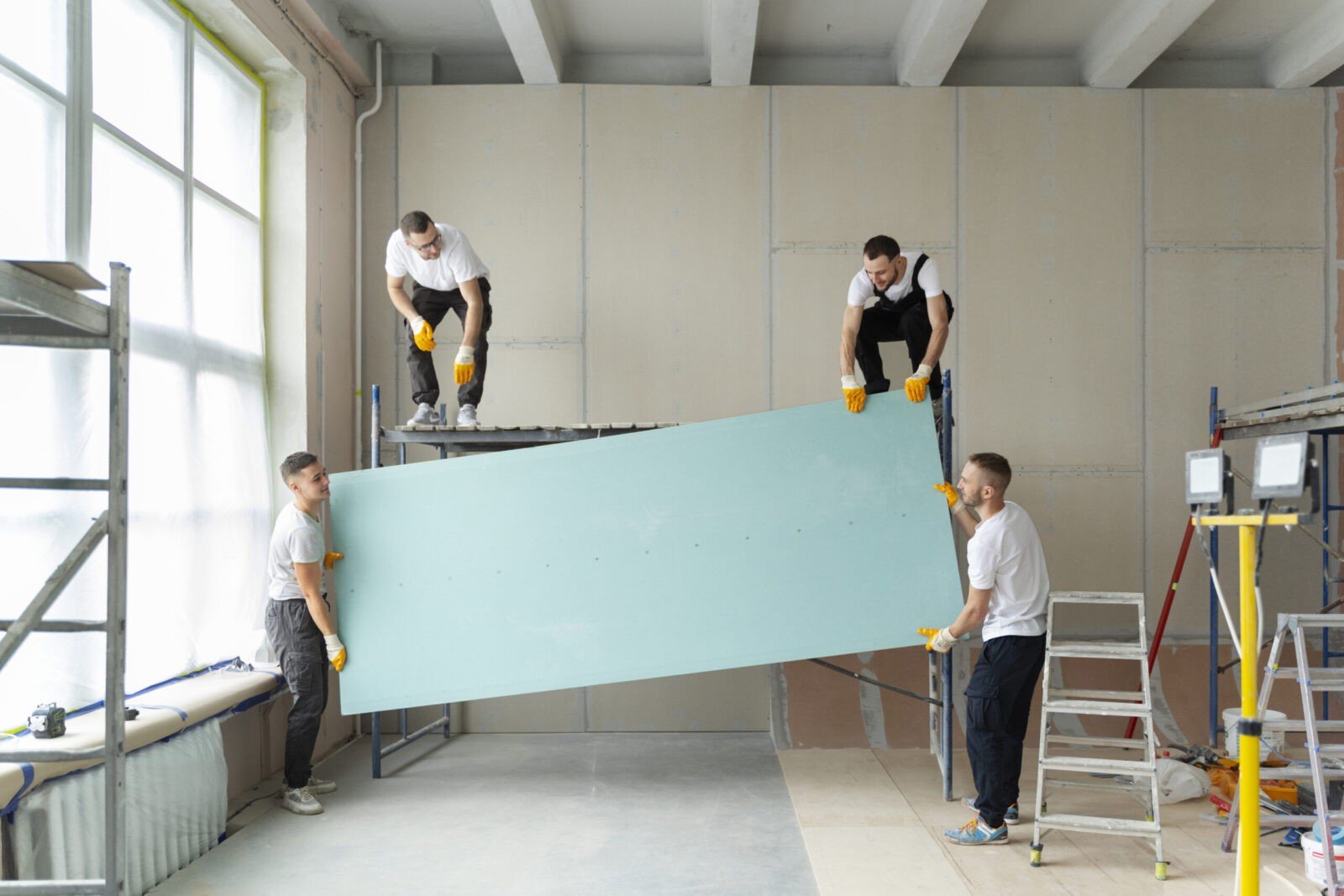
Introduction
Table of Contents
In the world of remodeling, the success of any project hinges significantly on the strength and reliability of the crew involved. Then, learning how to build a reliable remodeling crew not only enhances the quality of work but also fosters a positive experience for clients. When your team is trustworthy and efficient, it can significantly reduce stress, minimize delays, and improve overall project outcomes.
This article will provide a comprehensive guide on how to build a reliable remodeling crew that gets the job done. We will explore the essential aspects of assembling an effective team, including the choice between in-house staff and trusted subcontractors, the importance of effective scheduling, and strategies for managing overlapping projects. Additionally, we will discuss the critical role of communication, the implementation of standard operating procedures (SOPs), and the significance of ongoing training to ensure your crew remains skilled and knowledgeable.
Furthermore, we will delve into motivation strategies that can enhance productivity and job satisfaction among crew members, the importance of cultivating a positive company culture, and fostering accountability within the team. By the end of this article, you will have a well-rounded understanding of the factors that contribute to building a reliable remodeling crew, allowing you to make informed decisions that lead to successful projects and satisfied clients.
In-House Staff vs Trusted Subcontractors
In-House Staff
Hiring in-house staff offers several advantages. First, you gain full control over the team’s dynamics, ensuring that everyone is aligned with your company’s vision and values. In-house staff can develop a strong rapport, promoting collaboration and continuity across projects. However, maintaining a full-time staff can be costly, particularly during off-peak seasons.
Additionally, in-house employees may require ongoing training and development to stay updated with industry standards, which can add to operational expenses. The challenge lies in balancing the need for a consistent workforce while also managing fluctuating workloads.
Subcontractors
On the other hand, hiring trusted subcontractors offers flexibility. You can easily scale your workforce based on project demands. This approach allows you to tap into specialized skills that may not be present within your in-house team. However, managing subcontractors can present challenges. Communication might be less seamless, and you may need to invest time in building relationships to ensure quality work.
Moreover, the lack of direct oversight can lead to variability in performance, which may impact project outcomes. It is crucial to vet subcontractors thoroughly and establish clear expectations.
Comparison Table
Aspect | In-House Staff | Subcontractors |
|---|---|---|
Control | High | Variable |
Cost | Higher during off-peak | Variable based on project |
Flexibility | Low | High |
Specialized Skills | Limited | Available |
When deciding between in-house staff and subcontractors, consider your project’s specific needs, budget constraints, and the level of control you desire. Each option has its strengths and challenges, and the choice will ultimately shape the dynamics of your remodeling crew.
Effective Scheduling
Effective scheduling is crucial in remodeling projects. It serves as the backbone of project management, ensuring that tasks are completed on time and within budget. A well-structured schedule helps prevent delays and keeps the crew focused on their respective responsibilities. As Benjamin Franklin famously said, “Time is money.” This highlights the importance of time management in maximizing productivity and profitability.
To achieve efficient scheduling, various tools and techniques can be employed. Many project managers turn to popular scheduling software like Microsoft Project, Asana, and Trello. These platforms offer intuitive interfaces that allow users to create timelines, assign tasks, and track progress in real-time. Utilizing these tools makes it easier to visualize the entire project, from the initial design phase to the final walkthrough.
In addition to software, incorporating techniques such as the Critical Path Method (CPM) can greatly enhance scheduling efficiency. CPM identifies essential tasks and their dependencies, allowing managers to prioritize effectively. This approach ensures that resources are allocated appropriately, minimizing idle time and maximizing crew productivity.
The impact of effective scheduling on project timelines cannot be overstated. By having a clear roadmap, crews can work harmoniously, reducing the likelihood of miscommunication and mistakes. Moreover, a well-managed schedule fosters accountability among team members, further enhancing overall efficiency. Ultimately, investing time in scheduling translates to smoother project execution and satisfied clients.
Managing Crews for Overlapping Projects
Handling multiple remodeling projects simultaneously can be a daunting task. However, with the right strategies, it can be managed effectively. To successfully oversee overlapping projects, consider the following strategies:
Prioritize Projects: Assess each project’s urgency and importance. This helps allocate resources efficiently.
Resource Allocation: Identify your crew’s strengths and assign them to the projects that best match their skills.
Utilize Project Management Tools: Leverage software like Basecamp or Monday.com to track progress and manage tasks across different teams.
Set Clear Deadlines: Communicate clear timelines for each project to keep everyone focused and accountable.
A real-world example of effective management in action comes from a renovation company that took on two large projects in different neighborhoods. By prioritizing tasks and using project management software, they were able to streamline communication and resource allocation. This ensured that both teams had access to the materials and information needed to succeed.
Balancing resources and labor is vital when managing overlapping projects. Ensuring that each crew has the right tools and manpower can prevent bottlenecks. Regular assessments of labor needs and resource availability can help maintain this balance.
Finally, fostering communication across different teams is essential. Regular check-ins, progress updates, and collaborative problem-solving sessions can create a cohesive work environment. This ensures that all team members are aligned and working toward common goals, ultimately leading to successful project completions.
Communication and SOPs
“Effective communication is the backbone of any successful project, preventing costly mistakes and misunderstandings.”
In the remodeling industry, clear communication is pivotal for minimizing errors and ensuring that projects stay on track. When team members can share ideas and updates freely, they are less likely to make missteps that can lead to delays or additional costs. Regular check-ins and open dialogue help create an environment where everyone feels comfortable voicing concerns or suggestions.
Developing and implementing Standard Operating Procedures (SOPs) is another key component of effective communication. SOPs provide detailed guidelines on how tasks should be performed. This standardization not only streamlines processes but also ensures that every crew member understands their responsibilities. With well-defined SOPs, the likelihood of miscommunication decreases significantly, and projects can proceed smoothly.
To facilitate effective communication, consider utilizing various platforms. Tools like Slack or Trello allow for real-time messaging and task management, making it easy for teams to coordinate efforts. Video conferencing tools, such as Zoom, can also be invaluable for briefings and discussions, especially when dealing with multiple locations. Additionally, project management software can centralize information, ensuring that everyone has access to the latest updates and documents.
By combining strong communication practices with well-defined SOPs and the right tools, remodeling crews can significantly reduce mistakes and enhance overall efficiency. This foundation will not only improve the workflow but also help in building a trustworthy and reliable team.
Training Team Members
The remodeling industry demands a skilled and knowledgeable workforce. Training is essential to ensure that crew members are equipped with the techniques and safety protocols necessary for successful project execution. Well-trained employees not only enhance productivity but also foster a culture of quality and professionalism.
Initial Training
When onboarding new crew members, it is crucial to provide comprehensive initial training. This sets the foundation for their roles and responsibilities. Effective methods for initial training include:
Hands-on workshops to demonstrate techniques
Shadowing experienced team members
Safety protocol briefings and certifications
Online training modules for flexible learning
By investing time in initial training, you help new hires gain confidence and competence in their work, reducing the risk of errors during projects.

Ongoing Training
Training should not end after the first few weeks on the job. Continuous learning is vital for keeping skills sharp and adapting to new technologies and methods. Ongoing training can involve:
Regular skill refreshers and workshops
Industry conferences and seminars
Mentorship programs for knowledge sharing
Access to online courses for further education
Encouraging a culture of ongoing development not only boosts team morale but also enhances the overall competency of your remodeling crew. By prioritizing training, you create a team that is not only reliable but also willing to grow and improve in their craft.
Motivation Strategies
“Motivation is the fuel that drives productivity and job satisfaction.” In the remodeling industry, a motivated crew is essential for achieving high-quality results and maintaining efficient workflows. Understanding how to effectively motivate your team can significantly impact their performance.
One effective way to motivate your remodeling crew is through incentive programs. These programs can include performance bonuses, gift cards, or even additional time off for meeting project milestones. Recognizing hard work not only boosts morale but also encourages team members to strive for excellence.
Moreover, fostering a positive work environment is crucial. Encourage open communication and allow crew members to voice their ideas and concerns. When employees feel heard and valued, their job satisfaction increases, leading to improved productivity. Team-building activities can also enhance camaraderie, making work more enjoyable.
The impact of motivation on productivity cannot be overstated. A motivated crew is more likely to meet deadlines, produce higher-quality work, and exhibit greater dedication to projects. Studies show that motivated employees tend to have lower turnover rates, which can save your business time and resources in the long run.
Examples of successful motivation strategies include implementing recognition programs where achievements are celebrated publicly, organizing friendly competitions with rewards, and providing opportunities for professional growth. When team members see that their efforts lead to tangible rewards and recognition, their commitment to the job deepens.
As you continue to explore ways to enhance your remodeling crew, keep in mind that motivation is a key component for fostering a reliable and effective team.
Culture and Accountability
Creating a positive company culture is vital in establishing a reliable remodeling crew. A strong culture fosters collaboration, trust, and a sense of belonging among team members. When employees feel connected to the company’s values, their commitment to the work increases, leading to better performance.
To build this culture, it’s important to define and promote core values that resonate with your team. Consider these cultural values:
Integrity: Upholding honesty and transparency in all actions.
Respect: Valuing each team member’s contributions and perspectives.
Teamwork: Encouraging collaboration to achieve common goals.
Innovation: Embracing new ideas and creative solutions.
Accountability: Taking responsibility for individual and team performance.
Fostering accountability among team members is equally crucial. When crew members understand their roles and responsibilities, they are more likely to take ownership of their work. Implementing regular check-ins and performance reviews helps maintain this accountability. For instance, consider a remodeling company that initiated weekly team meetings to discuss project progress and individual contributions. This practice not only kept everyone informed but also encouraged team members to hold each other accountable.
The benefits of a strong culture and accountability are numerous. A cohesive team is more productive and less prone to conflicts, resulting in timely project completions. Furthermore, when accountability is ingrained in the culture, employees feel empowered to suggest improvements and take initiative, enhancing overall quality.
As you develop your remodeling crew, prioritize building a positive culture and instilling accountability. These elements will lead to a more engaged and effective team, setting the stage for successful projects.
FAQs
In the remodeling industry, questions often arise regarding the best practices for assembling a reliable crew. Here are some common inquiries along with their detailed answers:
1. What should I look for when hiring remodeling crew members?
When hiring, consider experience, skills, and attitude. Look for individuals with proven track records in similar projects. Additionally, a positive attitude and good communication skills are essential for team dynamics.
2. How can I ensure my crew stays motivated throughout a project?
Motivation can be fostered through recognition, incentives, and providing a supportive work environment. Regularly acknowledging the hard work of your team and offering opportunities for professional development can significantly enhance their motivation.
3. What are the benefits of using subcontractors over in-house staff?
Subcontractors can provide specialized skills that may not be available in-house. They often bring flexibility, allowing you to scale your workforce according to project requirements. However, it’s vital to establish clear communication and expectations to ensure quality work.
4. How can effective scheduling impact my remodeling project?
Effective scheduling is crucial for maintaining timelines and maximizing productivity. Utilizing scheduling tools can help you allocate resources efficiently, prevent overlaps, and keep the project on track.
5. How do I handle conflicts within the remodeling crew?
Address conflicts promptly and openly. Encourage team members to communicate their concerns and mediate discussions to find a resolution. Establishing a culture of respect and teamwork can minimize future conflicts.
These FAQs offer valuable insights into managing a reliable remodeling crew. By addressing these common concerns, you can lay a solid foundation for your projects.

Conclusion
Building a reliable remodeling crew is essential for the success of any renovation project. Throughout this article, we explored the importance of weighing the benefits of in-house staff versus trusted subcontractors, effective scheduling techniques, and strategies for managing overlapping projects. We also delved into the significance of clear communication, the development of standard operating procedures (SOPs), and the continuous training of team members. Additionally, fostering a motivating culture and instilling accountability among crew members are paramount to maintaining a productive work environment.
As you consider these strategies, remember that the foundation of a successful remodeling crew lies in thoughtful planning and execution. Implementing efficient scheduling tools can significantly streamline project timelines. Meanwhile, investing in training ensures that your team remains skilled and adaptable to new challenges. Moreover, cultivating a positive work culture can enhance team morale, leading to higher productivity and job satisfaction.
Take the time to assess your current practices and identify areas for improvement. Whether you choose to build an in-house team or rely on subcontractors, prioritize open communication and consistent training. By doing so, you will create a cohesive and reliable remodeling crew capable of delivering exceptional results. The journey to building an effective team may take time, but the rewards of a job well done will reflect in the quality of your projects and the satisfaction of your clients.
Join HandyRate and network and grow with us. Connect with us on
Facebook, Instagram and Twitter. We hope to see you soon!


